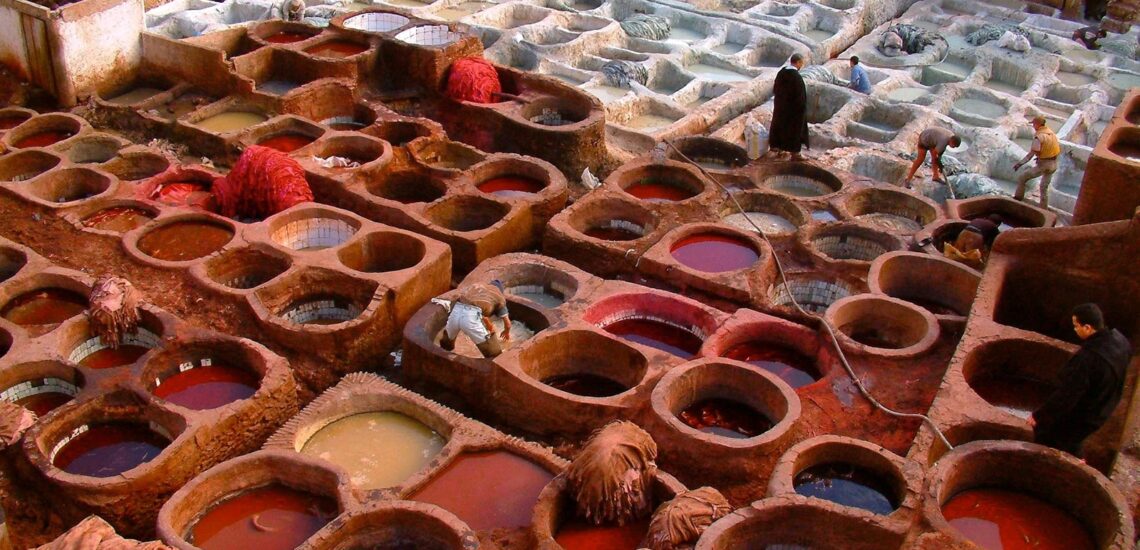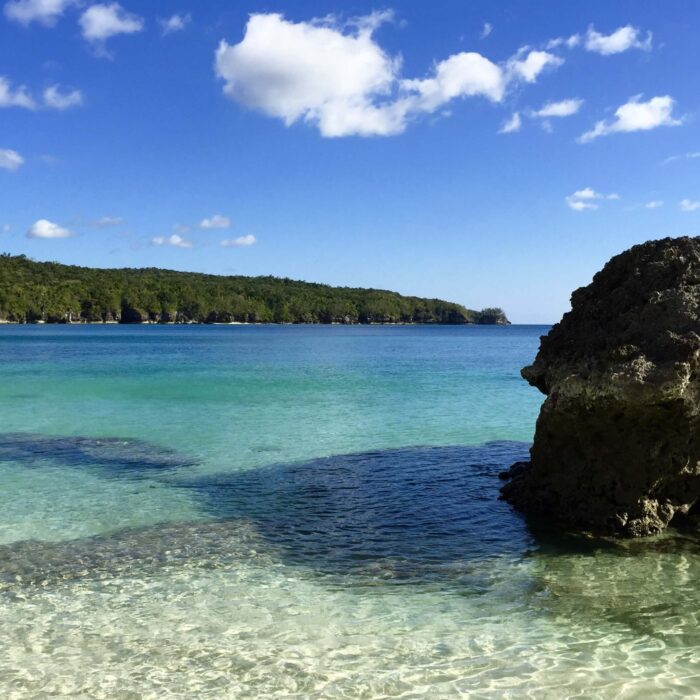Краткие факты о Марокко:
- Население: Около 37 миллионов человек.
- Столица: Рабат.
- Крупнейший город: Касабланка.
- Официальные языки: Арабский и берберский (амазигский); также широко используется французский.
- Валюта: Марокканский дирхам (MAD).
- Правительство: Унитарная парламентская конституционная монархия.
- Основная религия: Ислам, преимущественно суннитский.
- География: Расположена в Северной Африке, граничит с Атлантическим океаном и Средиземным морем на западе и севере, Алжиром на востоке и Западной Сахарой на юге.
Факт 1: Марокко – одна из самых посещаемых стран Африки.
Ежегодно сюда приезжают миллионы туристов, которых привлекает богатое культурное наследие, разнообразные ландшафты и исторические города.
- Туристическая статистика: По данным Министерства туризма Марокко, в 2023 году Марокко примет около 14,5 миллионов туристов, что делает его одним из лучших туристических направлений на континенте.
- Основные достопримечательности: Популярность Марокко как туристического направления во многом обусловлена его знаковыми городами, такими как Марракеш, Касабланка, Фес и Рабат. Марракеш, в частности, известен своими оживленными базарами, историческими дворцами и шумной площадью Джемаа-эль-Фнаа.
- Природная красота: Разнообразная география страны, включающая пустыню Сахара, Атласские горы и живописные прибрежные районы вдоль Атлантического океана и Средиземного моря, также привлекает любителей природы и приключений.
- Культурное наследие: Богатое культурное наследие Марокко, включая уникальную архитектуру, традиционные ремесла и знаменитую кухню, – еще один важный фактор, привлекающий туристов. Объекты Всемирного наследия ЮНЕСКО, такие как Медина в Фесе и Ксар в Аит-Бен-Хадду, добавляют ему привлекательности.
- Доступность: Развитая туристическая инфраструктура Марокко и близость к Европе делают его удобным направлением для международных путешественников.
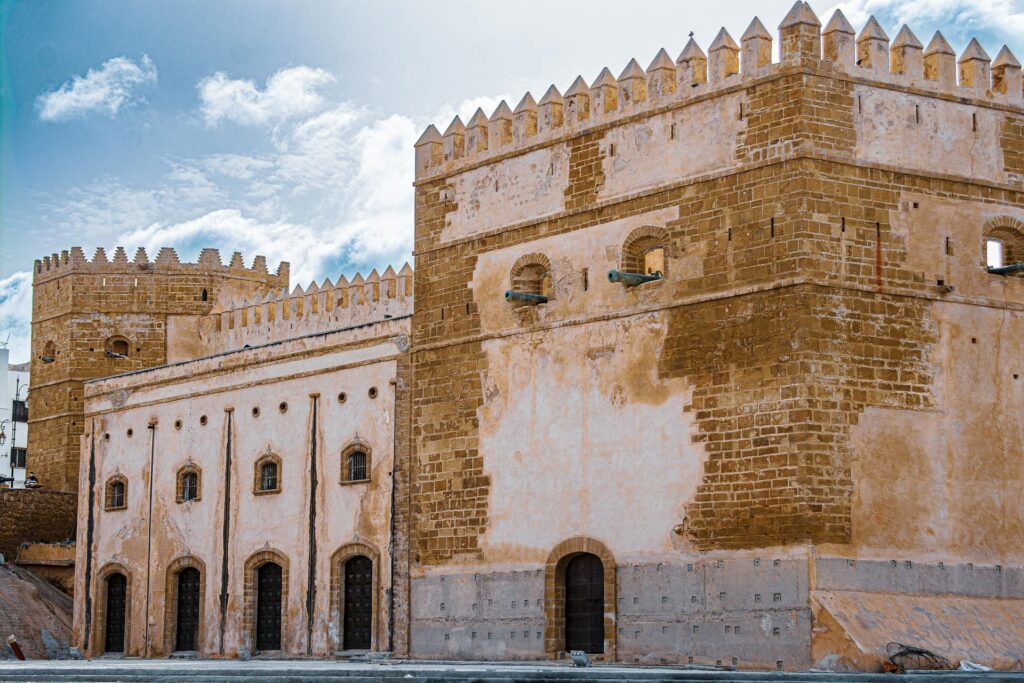
Факт 2: В Марокко проживает одна из старейших правящих династий в мире
Официально придя к власти в 1666 году при султане Мулай Рашиде, династия Алауитов правит Марокко уже более 350 лет. Династия претендует на происхождение от пророка Мухаммеда, что придает ей историческую и религиозную легитимность.
Долголетие династии Алауитов обеспечило Марокко стабильность и преемственность в различные исторические периоды, включая колониализм и независимость. Нынешний король Мохаммед VI, взошедший на престол в 1999 году, продолжает модернизировать страну, сохраняя ее богатое культурное наследие. Непреходящее присутствие династии является символом национального единства и самобытности Марокко.
Факт 3: Ручное окрашивание тканей до сих пор существует в Марокко
Ручное окрашивание тканей – традиционное ремесло, которое продолжает процветать в Марокко. Эта вековая техника особенно распространена в таких городах, как Фес и Марракеш, где ремесленники используют натуральные красители, полученные из растений, минералов и насекомых, для создания ярких цветов. Процесс включает в себя несколько этапов, в том числе приготовление краски, погружение в нее ткани и ее высыхание, причем часто эти этапы повторяются, чтобы добиться желаемого оттенка.
Ремесленники Марокко используют различные традиционные методы для создания сложных узоров и рисунков, такие как окрашивание галстуком и резистивное окрашивание. Эти методы передаются из поколения в поколение, сохраняя культурное наследие и ремесленное мастерство региона. Ткани, окрашенные вручную, используются для изготовления различных изделий, включая одежду, домашний текстиль и предметы декора, которые высоко ценятся как местными жителями, так и туристами.
Примечание: При путешествии по стране на автомобиле вам может понадобиться международное водительское удостоверение в Марокко, узнайте о необходимых документах заранее.
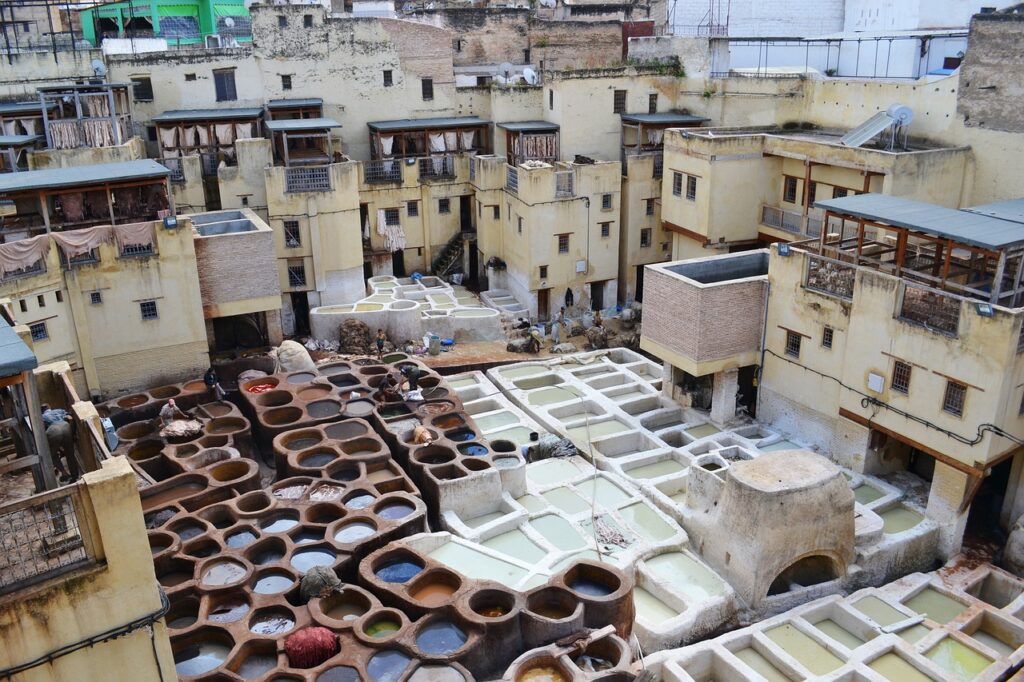
Факт 4: В Марокко вкусная и разнообразная кухня
Марокко славится своей вкусной и разнообразной кухней, которая отражает богатое культурное наследие страны и различные влияния. Марокканская кухня представляет собой слияние берберских, арабских, средиземноморских и французских кулинарных традиций, что позволяет получить уникальные и ароматные кулинарные впечатления.
Ключевыми блюдами марокканской кухни являются тажин – тушеное на медленном огне мясо, овощи и смесь специй, таких как кумин, куркума и шафран, которые готовятся в характерном коническом глиняном горшке. Кускус, еще одно основное блюдо, часто подается с овощами, мясом и пряным бульоном. Марокканская кухня также известна использованием консервированных лимонов, оливок и разнообразных свежих трав.
Не менее примечательны марокканская выпечка и сладости, в состав которых часто входят миндаль, мед и цветочная вода апельсина. Среди популярных лакомств – пахлава, выпечка, политая медом, и чебакия, кунжутное печенье, обжаренное и покрытое сиропом.
Факт 5: В Марокко производят качественные вина
В Марокко развивается винодельческая промышленность, которая производит качественные вина, ценимые как внутри страны, так и за ее пределами. Традиции виноделия в стране насчитывают тысячи лет, начиная с финикийских и римских времен, но современное виноградарство зародилось во времена французского колониального периода в начале XX века.
Винодельческие регионы Марокко, расположенные в основном у подножия Атласских гор и на побережье Атлантического океана, отличаются разнообразным микроклиматом и плодородными почвами, идеальными для выращивания винограда. Среди основных выращиваемых сортов винограда – Кариньян, Гренаш, Синсо, Совиньон Блан и другие.
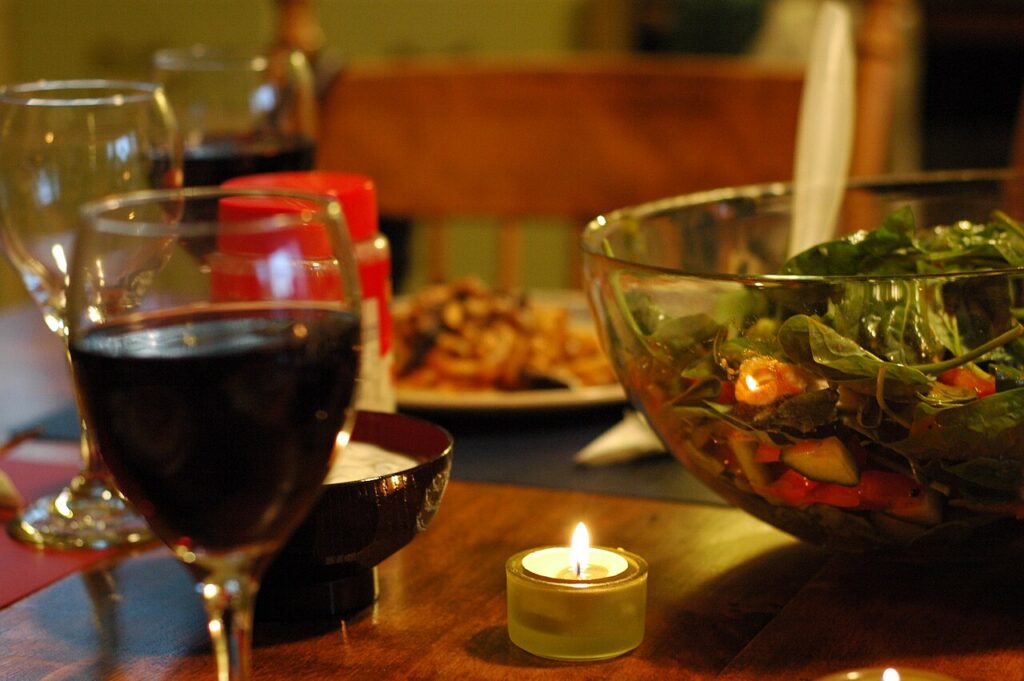
Факт 6: Марокканцы любят кофе и чай
Кофе и чай – любимые напитки в марокканской культуре, каждый из которых играет важную роль в ежедневных социальных ритуалах и гостеприимстве.
- Чай: Марокканский мятный чай, также известный как “атай”, является неотъемлемой частью марокканского гостеприимства и общественных собраний. Этот подслащенный зеленый чай ароматизируют свежими листьями мяты и сахаром, заваривают и наливают с высоты, чтобы образовалась пенка. Обычно его подают в маленьких стаканчиках и пьют в течение дня, символизируя тепло и радушие.
- Кофе: Кофе, особенно крепкий и ароматный кофе по-арабски, также популярен в Марокко. Его часто подают в маленьких чашечках и пьют после еды или в перерывах в течение дня. Марокканский кофе варят с добавлением специй, таких как корица или кардамон, что придает ему многогранность вкуса и аромата.
И кофе, и чай ценятся за их способность объединять людей, будь то дома, кафе или традиционные рынки (souks). Они являются неотъемлемой частью марокканской культуры, отражая гостеприимство страны.
Факт 7: Самый старый университет в мире находится в Марокко
Да, вы все правильно поняли. В Марокко находится один из старейших университетов мира – Университет Аль-Карауийн (также пишется Аль-Карауийн). Основанный в 859 году н.э. в городе Фес Фатимой аль-Фихри, университет признан ЮНЕСКО и Книгой рекордов Гиннесса как старейший в мире непрерывно действующий университет, выдающий дипломы.
Университет Аль-Карауин имеет богатую историю учености и обучения, предлагая курсы по исламским наукам, теологии, праву и различным научным дисциплинам. Он сыграл ключевую роль в интеллектуальном и культурном развитии мусульманского мира и Северной Африки.
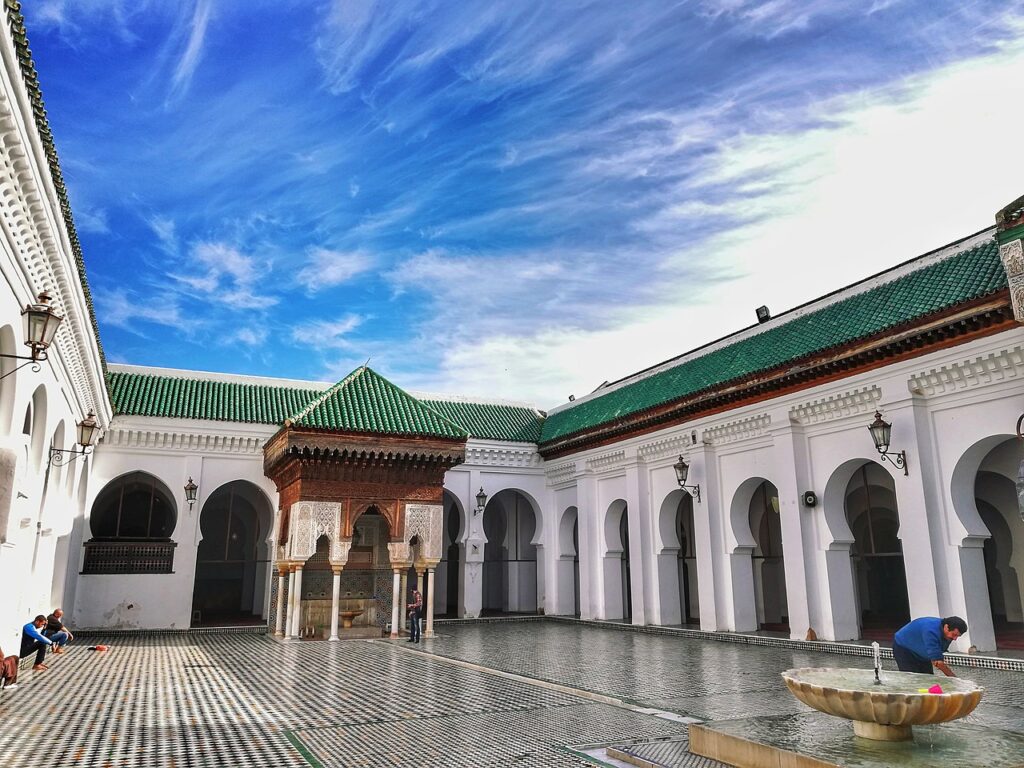
Факт 8: В Марокко есть горнолыжные курорты
Марокко может похвастаться горнолыжными курортами, расположенными в Атласских горах и являющимися одними из самых высокогорных в Африке. Самый известный горнолыжный курорт – Оукаймеден, расположенный недалеко от Марракеша на высоте около 2 600 метров (8 500 футов) над уровнем моря. Такая высота позволяет кататься на лыжах и сноуборде в зимние месяцы, как правило, с декабря по март.
Из Оукаймеден открывается потрясающий вид на Атласские горы, и здесь есть различные удобства, такие как подъемники, прокат снаряжения и жилье. Лыжный сезон в Марокко проходит в условиях относительно стабильного снежного покрова, что привлекает как местных жителей, так и туристов, желающих заняться зимними видами спорта.
Факт 9: В Марокко изобилие качественных пляжей
Марокко располагает разнообразной береговой линией вдоль Атлантического океана и Средиземного моря, предлагая множество качественных пляжей, которые привлекают как местных жителей, так и туристов.
- Атлантическое побережье: Вдоль Атлантического побережья расположены такие популярные пляжные направления, как Эс-Сувейра, известная своими ветреными условиями, идеальными для занятий винд- и кайтсерфингом, и Агадир, известный своими длинными песчаными пляжами и оживленной набережной. Эти пляжи привлекают любителей солнечных ванн, водных видов спорта и семей, стремящихся к релаксации и отдыху.
- Средиземноморское побережье: На средиземноморском побережье такие города, как Танжер и Аль-Хосейма, могут похвастаться прекрасными пляжами с прозрачной водой и живописными окрестностями. На этих пляжах можно купаться, заниматься снорклингом и наслаждаться блюдами из морепродуктов в близлежащих прибрежных городах.
- Разнообразие побережья: Прибрежное разнообразие Марокко включает в себя скалистые бухты, песчаные участки и живописные утесы, что позволяет подобрать пляжный отдых в соответствии с различными предпочтениями. Некоторые пляжи оживленные, с кафе и оборудованием для водных видов спорта, а другие предлагают уединенные места для спокойного принятия солнечных ванн и живописных видов.
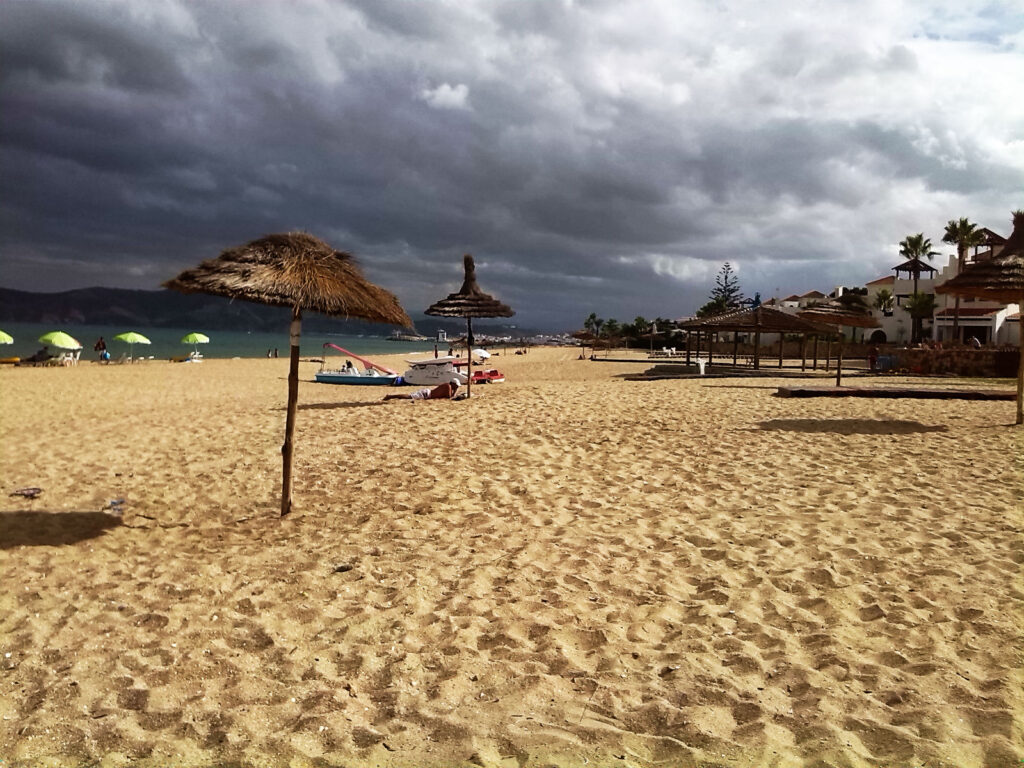
Факт 10: В Марокко уникальная архитектура
Марокко может похвастаться самобытным архитектурным наследием, в котором смешались исламское, мавританское и берберское влияние, что привело к появлению уникальных и богато украшенных зданий и мечетей, отражающих богатую культурную историю страны.
- Исламская архитектура: В марокканской архитектуре преобладают исламские принципы дизайна, характеризующиеся геометрическими узорами, сложной черепичной кладкой (зеллиге) и витиеватой лепниной (гипсовой штукатуркой). Эти элементы украшают мечети, дворцы и традиционные дома (риады), демонстрируя тщательное мастерство и внимание к деталям.
- Мавританское влияние: Мавританский архитектурный стиль, известный своими подковообразными арками, куполами и внутренними двориками с искусными фонтанами, находит свое отражение в таких исторических местах, как мечеть Хасана II в Касабланке и сады Альгамбры в Марракеше.
- Берберские традиции: Берберская архитектура, распространенная в сельских районах и горных деревнях, подчеркивает практичность и экологичность. Строения обычно возводятся из местных материалов, таких как глинобитные кирпичи, и имеют плоские крыши с террасами для общих собраний и сушки урожая.
- Исторические достопримечательности: Среди архитектурных достопримечательностей Марокко – древнеримские руины Волюбилиса, город-крепость Аит-Бенхадду (объект Всемирного наследия ЮНЕСКО), а также легендарные медины (старые городские кварталы) Феса и Марракеша, где лабиринтные улочки ведут к шумным базарам и традиционным хаммамам (баням).

Опубликовано Июнь 29, 2024 • 8м на чтение

